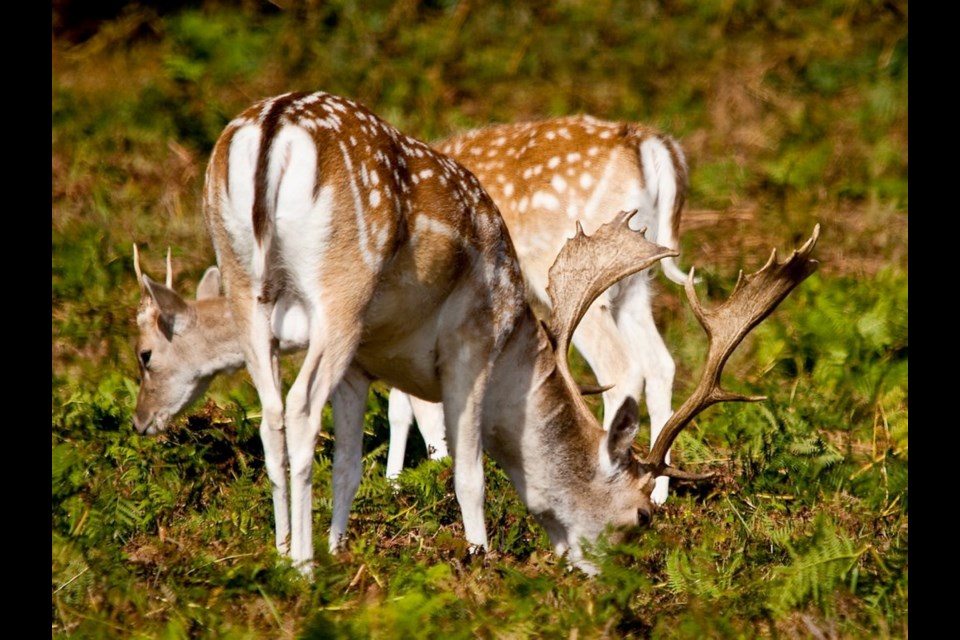Residents of Mayne Island who have been struggling to deal with an over-abundant population of European fallow deer for years may be finally getting help.
The Capital Regional District has solicited proposals for a strategy to manage the non-native species after more than two decades of the problem.
The deer were introduced to the island after a small number escaped from a farm in the early 1990s.
After years of breeding, the deer population has been estimated at 500 to 1,000 on an island that is home to just over 1,000 people. Biologists believe the number of deer could be higher than the estimate, based on the number of deer removed every year.
According to the Mayne Island Conservancy, the fallow deer, along with their black-tail counterparts, are decreasing biodiversity on the island.
The CRD’s request for proposals says the fallow deer have decreased songbird populations, reduced agriculture yields and damaged personal property and gardens. There has also been an increase in deer-vehicle collisions.
The ungulates are believed to have spread to other southern Gulf Islands as well.
Plagued for years by the growing deer population, Mayne Island residents formed the Mayne Island Fallow Deer Committee, headed by local trustee Jeanine Dodds.
Dodds has lived on the island since the 1960s. She has been dealing with the issue for 25 years, lobbying hard for the past six.
“The situation has blown up into what I see as the most significant environmental problem on Mayne Island. It’s huge,” Dodds said.
While there are minimal limits on hunting fallow deer, Mayne Island did not allow hunting until recently, except in specific cases.
Eight local hunters were provided with annual permits to hunt fallow deer on private lands with the owners’ permission.
The volunteers removed roughly 1,600 deer between 2003 and 2016, according to the CRD, but the population is still increasing, “which means the current management option is not keeping up with the rate of reproduction.”
Now that the CRD is looking for strategies, Dodds is hopeful.
“I’m pleased, but it’s only step one of maybe 25 steps to go. We’ve lobbied for almost six years now to get the basic plan in place, so that might lead to some funding. We need to have regular yearly funding so we can have hunters from off-island,” she said.
There are four options for management strategies: conflict reduction, using landscaping, fencing and repellents to keep deer and people apart; population reduction, which includes relocating and culling the animals; fertility control; and “learning to live with deer” through public education.
The regional government is seeking “qualified professionals with experience with hyper-abundant wildlife in a populated area.” They will work with CRD staff, the deer committee, and residents and stakeholders on the island.
Sidney Island has also struggled with fallow deer, instituting annual culls and hunting to reduce the population, and the animals have been spotted on Saturna and Galiano islands.



